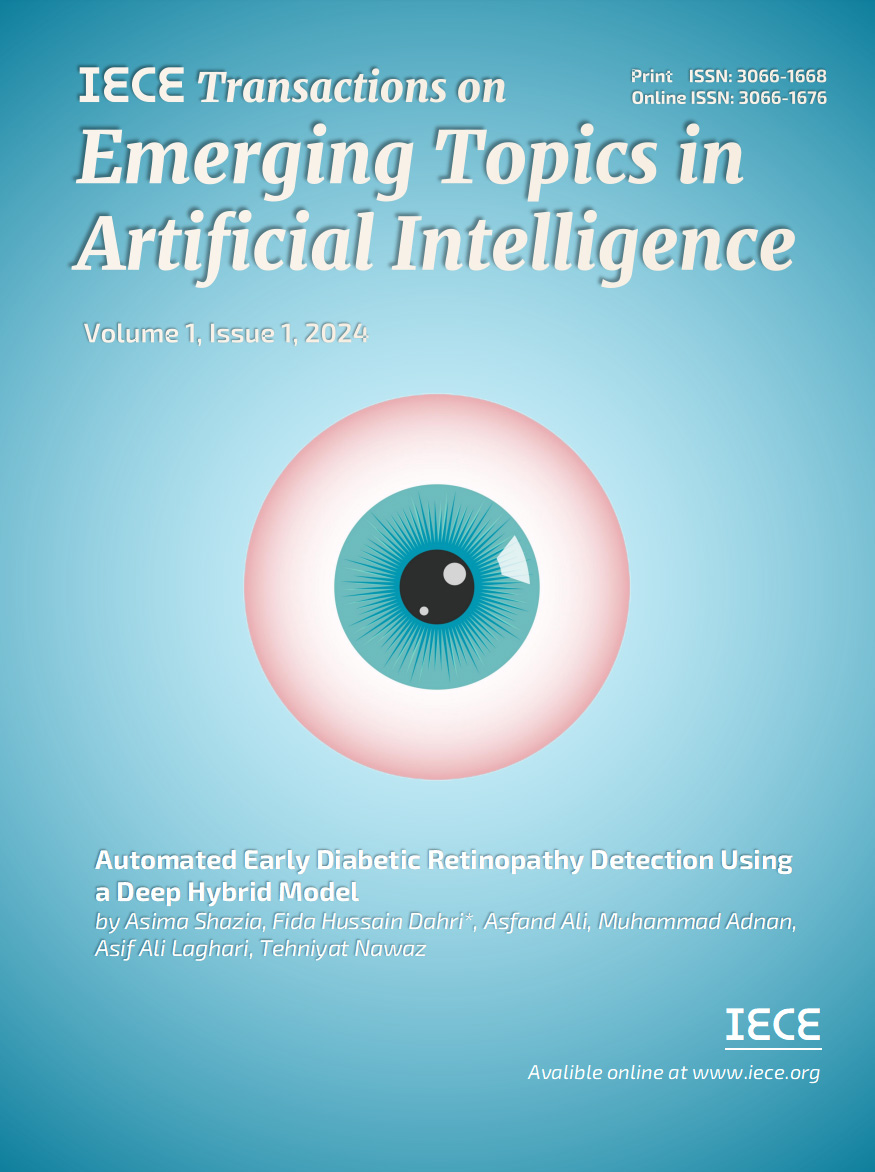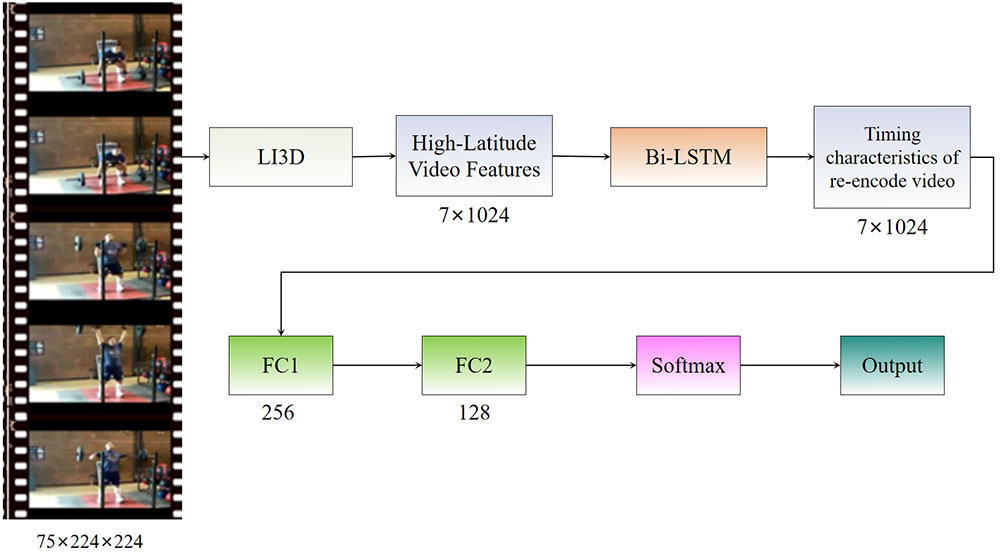IECE Transactions on Emerging Topics in Artificial Intelligence
ISSN: 3066-1676 (Online) | ISSN: 3066-1668 (Print)
Email: [email protected]


 Submit Manuscript
Edit a Special Issue
Submit Manuscript
Edit a Special Issue

[1]Zhu, F., Xie, J., & Fang, Y. (2016, March). Learning cross-domain neural networks for sketch-based 3D shape retrieval. In Proceedings of the AAAI conference on artificial intelligence (Vol. 30, No. 1).
[2]Andrade-Ambriz, Y. A., Ledesma, S., Ibarra-Manzano, M. A., Oros-Flores, M. I., & Almanza-Ojeda, D. L. (2022). Human activity recognition using temporal convolutional neural network architecture. Expert Systems with Applications, 191, 116287.
[3]Karpathy, A., Toderici, G., Shetty, S., Leung, T., Sukthankar, R., & Fei-Fei, L. (2014). Large-scale video classification with convolutional neural networks. In Proceedings of the IEEE conference on Computer Vision and Pattern Recognition (pp. 1725-1732).
[4]Tran, D., Bourdev, L., Fergus, R., Torresani, L., & Paluri, M. (2015). Learning spatiotemporal features with 3d convolutional networks. In Proceedings of the IEEE international conference on computer vision (pp. 4489-4497).
[5]Zha, S., Luisier, F., Andrews, W., Srivastava, N., & Salakhutdinov, R. (2015). Exploiting image-trained CNN architectures for unconstrained video classification. arXiv preprint arXiv:1503.04144.
[6]Wang, C., Wang, Y., Han, Y., Song, L., Quan, Z., Li, J., & Li, X. (2017, January). CNN-based object detection solutions for embedded heterogeneous multicore SoCs. In 2017 22nd Asia and South Pacific design automation conference (ASP-DAC) (pp. 105-110). IEEE.
[7]Donahue, J., Anne Hendricks, L., Guadarrama, S., Rohrbach, M., Venugopalan, S., Saenko, K., & Darrell, T. (2015). Long-term recurrent convolutional networks for visual recognition and description. In Proceedings of the IEEE conference on computer vision and pattern recognition (pp. 2625-2634).
[8]Khan, S. H., Hayat, M., & Porikli, F. (2019). Regularization of deep neural networks with spectral dropout. Neural Networks, 110, 82-90.
[9]Pan, T., Song, Y., Yang, T., Jiang, W., & Liu, W. (2021). Videomoco: Contrastive video representation learning with temporally adversarial examples. In Proceedings of the IEEE/CVF conference on computer vision and pattern recognition (pp. 11205-11214).
[10]Chao, Y. W., Yang, J., Price, B., Cohen, S., & Deng, J. (2017). Forecasting human dynamics from static images. In Proceedings of the IEEE conference on computer vision and pattern recognition (pp. 548-556).
[11]Deo, N., Rangesh, A., & Trivedi, M. (2016, November). In-vehicle hand gesture recognition using hidden markov models. In 2016 IEEE 19th International Conference on Intelligent Transportation Systems (ITSC) (pp. 2179-2184). IEEE.
[12]Sahoo, D., Pham, Q., Lu, J., & Hoi, S. C. (2017). Online deep learning: Learning deep neural networks on the fly. arXiv preprint arXiv:1711.03705.
[13]Bertasius, G., Wang, H., & Torresani, L. (2021, July). Is space-time attention all you need for video understanding?. In ICML (Vol. 2, No. 3, p. 4).
[14]Fan, H., Xiong, B., Mangalam, K., Li, Y., Yan, Z., Malik, J., & Feichtenhofer, C. (2021). Multiscale vision transformers. In Proceedings of the IEEE/CVF international conference on computer vision (pp. 6824-6835).
[15]Tong, Z., Song, Y., Wang, J., & Wang, L. (2022). Videomae: Masked autoencoders are data-efficient learners for self-supervised video pre-training. Advances in neural information processing systems, 35, 10078-10093.
[16]Lin, J., Gan, C., & Han, S. (2019). Tsm: Temporal shift module for efficient video understanding. In Proceedings of the IEEE/CVF international conference on computer vision (pp. 7083-7093).
[17]Ryoo, M., Piergiovanni, A. J., Arnab, A., Dehghani, M., & Angelova, A. (2021). Tokenlearner: Adaptive space-time tokenization for videos. Advances in neural information processing systems, 34, 12786-12797.
[18]Yang, H., Huang, D., Wen, B., Wu, J., Yao, H., Jiang, Y., ... & Yuan, Z. (2022). Self-supervised video representation learning with motion-aware masked autoencoders. arXiv preprint arXiv:2210.04154.
[19]Wei, C., Fan, H., Xie, S., Wu, C. Y., Yuille, A., & Feichtenhofer, C. (2022). Masked feature prediction for self-supervised visual pre-training. In Proceedings of the IEEE/CVF Conference on Computer Vision and Pattern Recognition (pp. 14668-14678).
[20]Xia, X., Xu, C., & Nan, B. (2017, June). Inception-v3 for flower classification. In 2017 2nd international conference on image, vision and computing (ICIVC) (pp. 783-787). IEEE.
IECE Transactions on Emerging Topics in Artificial Intelligence
ISSN: 3066-1676 (Online) | ISSN: 3066-1668 (Print)
Email: [email protected]

Portico
All published articles are preserved here permanently:
https://www.portico.org/publishers/iece/